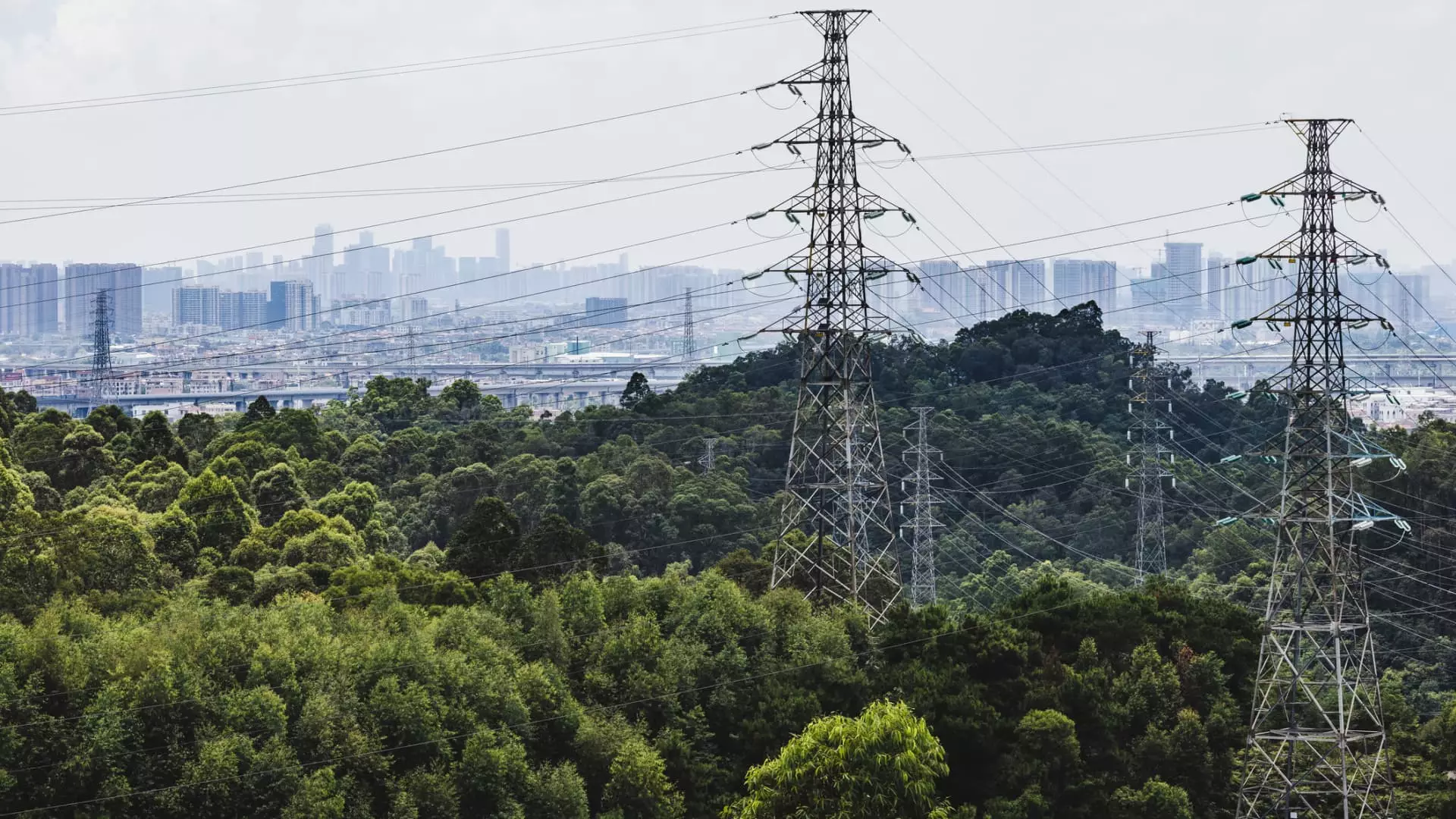As we navigate the fluctuating landscape of the American economy, one stark reality stands out: the soaring prices of electricity. While inflation has shown signs of stabilization, the cost of powering households has not only risen but is expected to outpace general inflation rates well into 2026. With an increase of 4.5% over the past year, this unique inflationary pressure is a cause for concern and represents a significant burden on American families. Currently, the average household spends approximately $1,760 on electricity annually—a figure that is dramatically rising due to a myriad of economic factors.
Demand versus Supply: A Disparity That Can’t Be Ignored
The crux of the issue lies within the basic economic principle of supply and demand. As more households and businesses transition to energy-efficient technologies and incorporate new electronic devices into their daily lives, demand is rapidly increasing. This demand surge is exacerbated by deactivation of older power facilities, which cannot keep pace with the country’s energy needs. David Hill, a key figure at the Bipartisan Policy Center, aptly summarizes the situation: the story is simple, but the implications are complex and dire.
The disparity isn’t just a national issue but a geographic one too. Households in regions like Hawaii and New England are grappling with electricity prices that can be nearly three times higher than those in states like North Dakota. Why does this matter? Because it highlights a growing inequity that affects how each citizen experiences what should be a basic utility.
The Data Center Dilemma: A Power-Hungry Beast
One cannot overlook the role of data centers in this escalating energy crisis. As the backbone of the digital economy, these centers consume massive quantities of electricity, and their demand is projected to double or triple by 2028. Currently, they account for 12% of America’s electricity usage, a figure that was previously only 4.4% in 2023. The human implications of this data-driven demand are profound; while companies profit, consumers bear the escalating costs. It raises an unsettling question: at what point does the insatiable appetite for data compromise our economic stability?
These trends reflect a broader reality of a nation overly reliant on digitalization, neglecting the energy resources required to sustain it. The very fabric of American life appears increasingly intertwined with an inefficient grid system unprepared to handle its own success.
The Flawed Infrastructure: A Ticking Time Bomb
The electricity supply chain in the United States faces an immense challenge, one that is overdue for remedial action. Aging infrastructure is a significant issue; much of the transmission system is indeed “stuck in a rut.” With demand peaking and the grid showing its age, the situation looks dire. The Energy Department’s failure to meet capacity growth targets signifies not just inefficiency but a systemic neglect that could lead to catastrophic failures.
When you add shortages of critical transmission equipment and soaring delivery timelines—which have escalated from mere weeks to several years—you begin to see a concerning picture. If half of the transformers in the country approach the end of their useful life, the question remains: how long before a major outage rattles the lives of millions?
A Financial Friction Point: The Burden on Households and Businesses
The shift from fossil fuels to renewable energy sources, aimed at combating climate change, may be noble, but it comes at a price. While electric vehicles and heat pumps are undoubtedly more efficient, they compound the existing electricity demand, putting further strain on households. The impact on the average consumer is palpable, with an expected rise of $219 in their annual electricity bill by 2025 alone. State and federal initiatives aimed at promoting renewable energy can end up heightening financial stress on families already struggling to make ends meet.
Moreover, as the economy strives to be greener, the truth remains: energy inflation outpaces measurable increases in disposable income for many. There’s an irony in striving for environmental sustainability that, paradoxically, reduces economic viability for the very individuals it seeks to benefit. The idea that we can transition to greener energy without an effective and responsive grid infrastructure is part of the broader catastrophe brewing beneath the surface.
The Path Forward: Rethinking Our Energy Landscape
It is crucial to call for comprehensive reforms that prioritize not just shifting to greener technologies but also addressing the systemic issues affecting our electricity supply chain. Governments and private sectors must collaborate to revamp an outdated grid, seeking innovative solutions to meet increasing demand while protecting both consumers and businesses from crippling energy costs.
In an age where technological advancement continues to outpace policy and infrastructure, hasty attempts to create an energy-efficient utopia may leave too many behind. To succeed, America must acknowledge the harsh truths surrounding electricity costs so that we can genuinely create a sustainable energy future for all.

